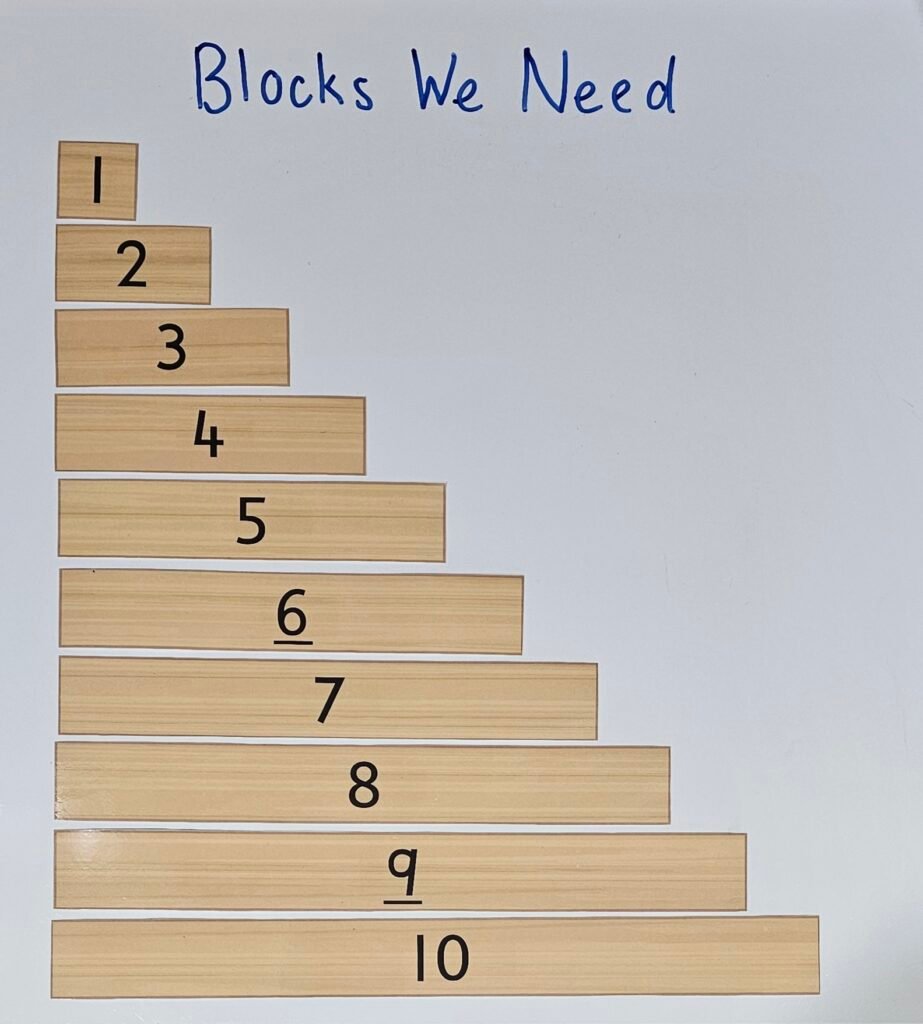20) Starting at Ten: Using Cubes
Counting Forwards 10 to 20
Understanding Activity
This is an ‘understanding’ (proficiency strand) activity.
Please refer to the instructions in the appropriate Implementation Planner for your context.
Mathematics
- Use the cardinal principle of counting; the last number said indicates the group’s total.
- Match Bond Blocks 1 to 10 with the correct number of 2 cm cubes.
- Connect quantities to number names and numerals.
- Develop fluency counting forwards in the correct order from 10 to 20.
- Identify numbers from 11 to 19 as two-part bond made of 10 and another number.
Language
- one longer
- one more than (later introduce ‘one greater than’)
- one number after
Tip for Checking Numeral Orientation
Session 3
PAUSE the video at the timestamp 1 minute 26 seconds.
Place the enlarged paper bond blocks on the whiteboard. Students use this visual to check their block orientation.
Scroll down on this page to download the Enlarged Paper Bond Blocks.

Tip for Packing Away Cubes
This is a personal preference but at the end of Session 3, I always instruct students to put cubes away in sticks of 10, not random amounts. I have two reasons for this:
- Firstly, when they make the 10 they practice purposeful counting.
- Secondly, and more importantly, when they break the stick of 10 to make other numbers they think about the size of numbers and how they relate to each other. It is essential students develop this thinking.

Differentiation
A little easier
Counting order
B
A little harder
AAA
P
